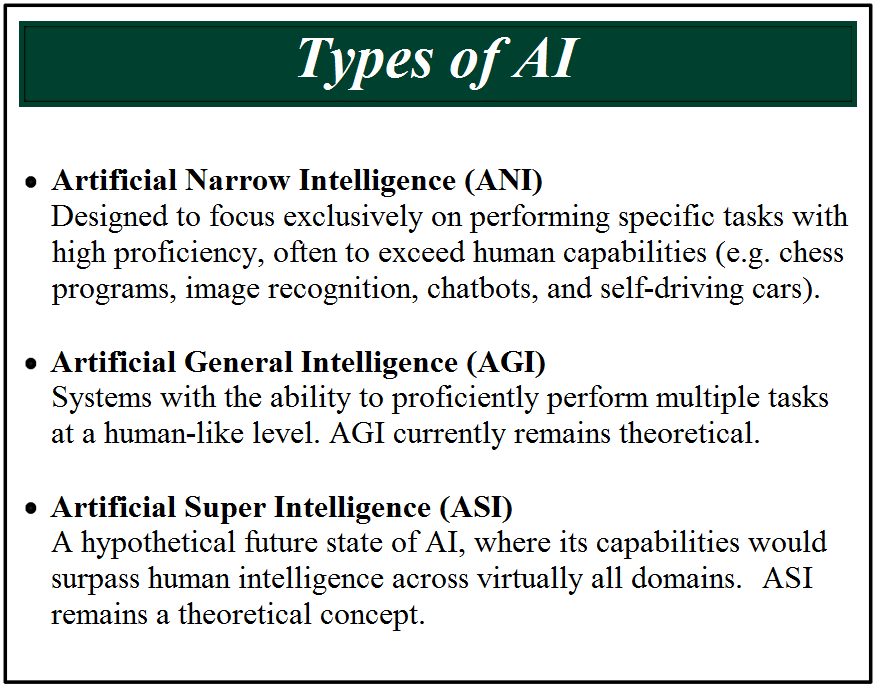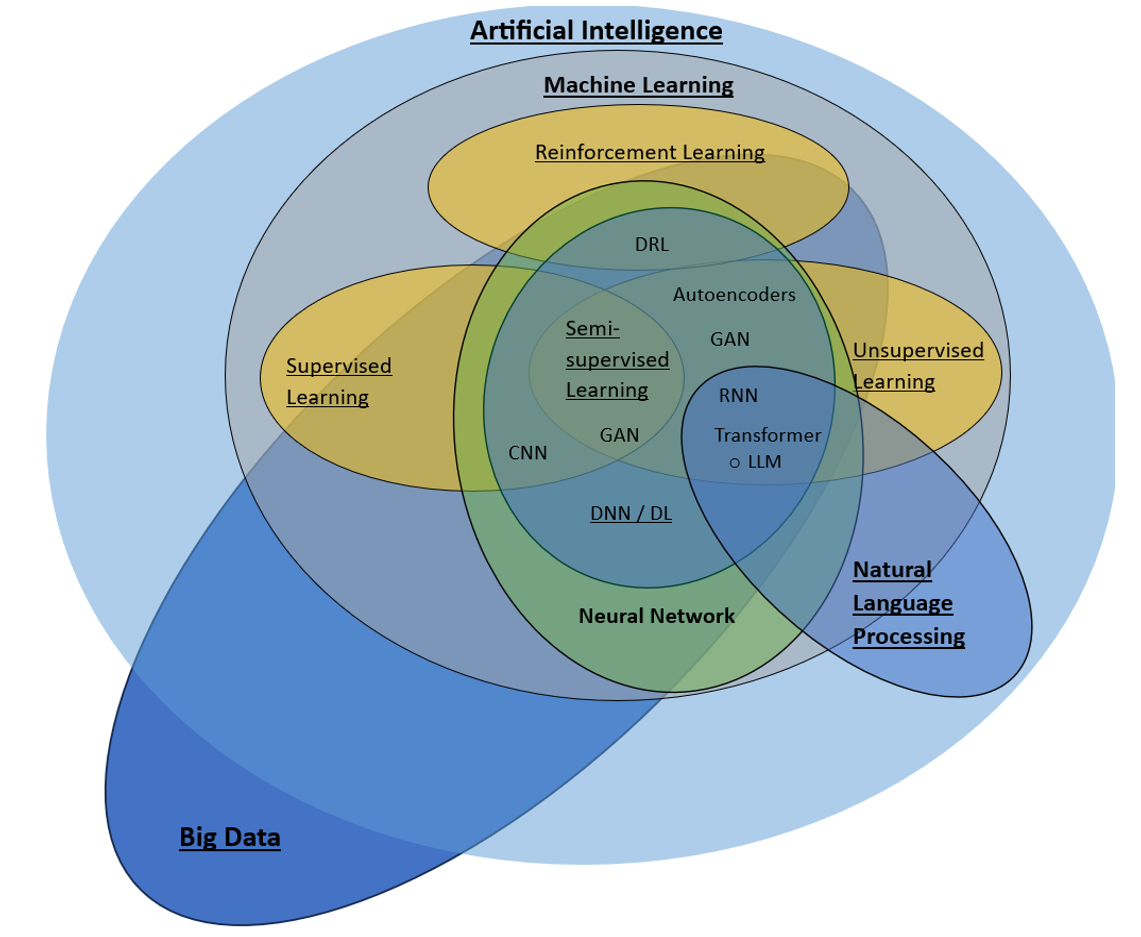Beyond AI – Part 1
Insights
What is AI?
Artificial Intelligence (AI) is one of the most transformative and significant technological developments of the modern era. At its core, AI refers to technology that enables machines to simulate human cognitive abilities. Using sophisticated algorithms, AI recognizes patterns and learns from the data. This enables it to perform cognitive functions such as understanding language, problem-solving, decision-making, creativity, and even autonomous operations. Artificial Intelligence is structured into various interconnected subsets, each dedicated to a particular function or capability. Even now AI is already reshaping industries, and as it continues to evolve, it is expected to play an even greater role in driving innovation and solving complex challenges across various sectors.

Before understanding the details of AI, it makes sense to start with what makes AI work. For AI to work effectively, these systems require “fuel” which comes in the form of vast amounts of data or Big Data. Big data is large and complex sets of data that come in the form of structured data (financial records, inventory databases, transaction logs), Unstructured data (social media posts, videos, emails), and a combination of both. AI analyzes this data to train the algorithms to extract meaningful patterns which causes the AI to learn, adapt, and improve. The quality, diversity, and scale of available data directly impact on an AI system’s performance and reliability.
Natural Language Processing (NLP) is a subset of AI and has one of the most visible applications. This gives AI the ability to understand and work with the human language. It allows computers to interpret, understand, analyze, and generate responses in meaningful ways. It combines elements of computational linguistics, statistical modeling, and machine learning techniques to bridge the gap between human communication and computer understanding.
At the core of AI is the concept of learning from data. Rather than relying on a fixed set of rules, AI systems are designed to learn from examples. This process is similar to how people learn from experience. By analyzing countless examples, these systems can improve over time and perform tasks more accurately. This approach, known as Machine Learning (ML), is at the heart of most modern AI applications. ML encompasses several methodologies: supervised learning, unsupervised learning, semi-supervised learning, reinforcement learning, and transfer learning. By using machine learning, AI is continually improving decisions and the manner they are made.
Delving deeper into Machine Learning, is something called Neural Networks. This forms the backbone of AI systems by mimicking the way the human brain functions. These brain-inspired computational models are designed to recognize patterns, classify data, and make informed decisions. Neural networks are categorized into two primary forms, Shallow Neural Networks and Deep Neural Networks (Deep Learning). Deep Learning is complex, featuring multiple hidden layers capable of solving intricate problems by using specialized models of Deep Learning which are designed for specific tasks. Such as voice recognition, image identification, and autonomous decision-making.
One of these models is called a Transformer. It’s an exciting recent development because these systems process all parts of a sequence of data at once, making them both faster and more efficient. This breakthrough has led to the creation of large language models (LLMs) like ChatGPT, Gemini, and Claude, which can generate human-like text and assist in a wide range of applications. The figure below illustrates the complexity of AI and its relationship with interconnected subsets.
Innovation in AI isn’t just about making systems smarter, it’s also about making them more efficient. DeepSeek, an emerging open-source AI model, gained significant attention in late January by challenging the prevailing AI investment framework for its cost-effective training approach. It differs from other LLMs as it employs a strategy similar to finding a specific book in a vast library; it focuses only on the most relevant pieces of information rather than scanning every single page. This method not only reduces the time and resources needed to train the system but also paves the way for more affordable and scalable AI solutions. As techniques like these become more refined, the potential for new and accessible applications of AI expands dramatically.
Artificial intelligence stands as one of the most transformative technologies of our time, as it can unlock new frontiers in science and technology. AI has the potential to profoundly impact everyday life from home to work and everywhere in-between. AI is reshaping industries through automating routine tasks, enabling businesses to operate more efficiently, inspiring new forms of creativity, allowing smart home devices that learn your preferences, or advanced systems that assist doctors in diagnosing illnesses. As AI continues to evolve, it promises to fundamentally reshape how we live, work, and interact with our environment by expanding the boundaries of technological possibility.
The future of AI is filled with almost unlimited potential. As this technology matures and becomes increasingly adopted, we can expect to see it not only streamlining processes and reducing costs but also opening entirely new fields of innovation. The journey into AI’s ever-expanding influence continues in Part 2 of our series “Beyond AI”. Next time we will be exploring the AI ecosystem and the critical roles played by AI enablers and adopters in shaping this transformative landscape. Join us as we unravel the broader implications of AI’s rapid evolution and what it means for the future of innovation and investment.

***
Oak Associates Funds are available to U.S. investors only. To determine if this Fund is an appropriate investment for you, carefully consider the Fund’s investment objectives, risk factors and charges and expenses before investing. This and other information can be found in the Fund’s prospectus which may be obtained by clicking https://www.oakfunds.com/forms-information/ or by calling 1-888-462-5386. Please read the prospectus carefully before investing.
Mutual fund investing involves risk, including the possible loss of principal. Oak Associates Funds are distributed by Ultimus Fund Distributors, LLC (Member FINRA/SIPC). Ultimus Fund Distributors, LLC and Oak Associates Funds are separate and unaffiliated.



